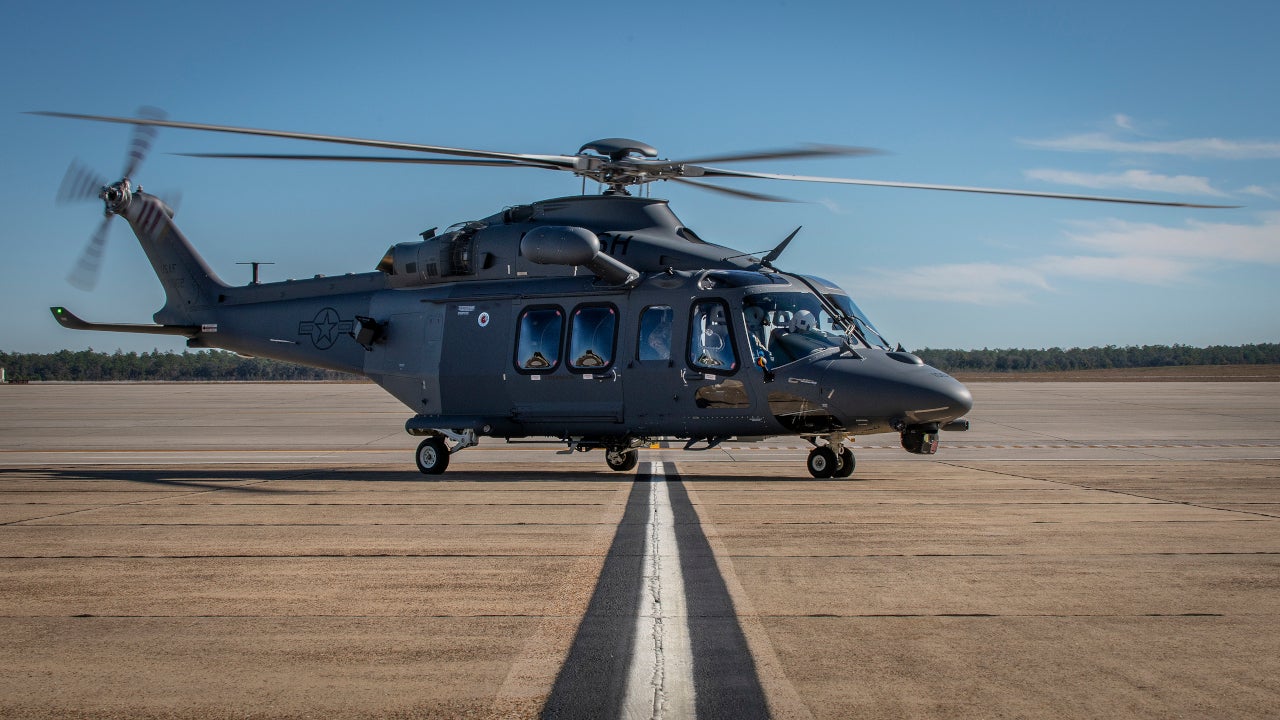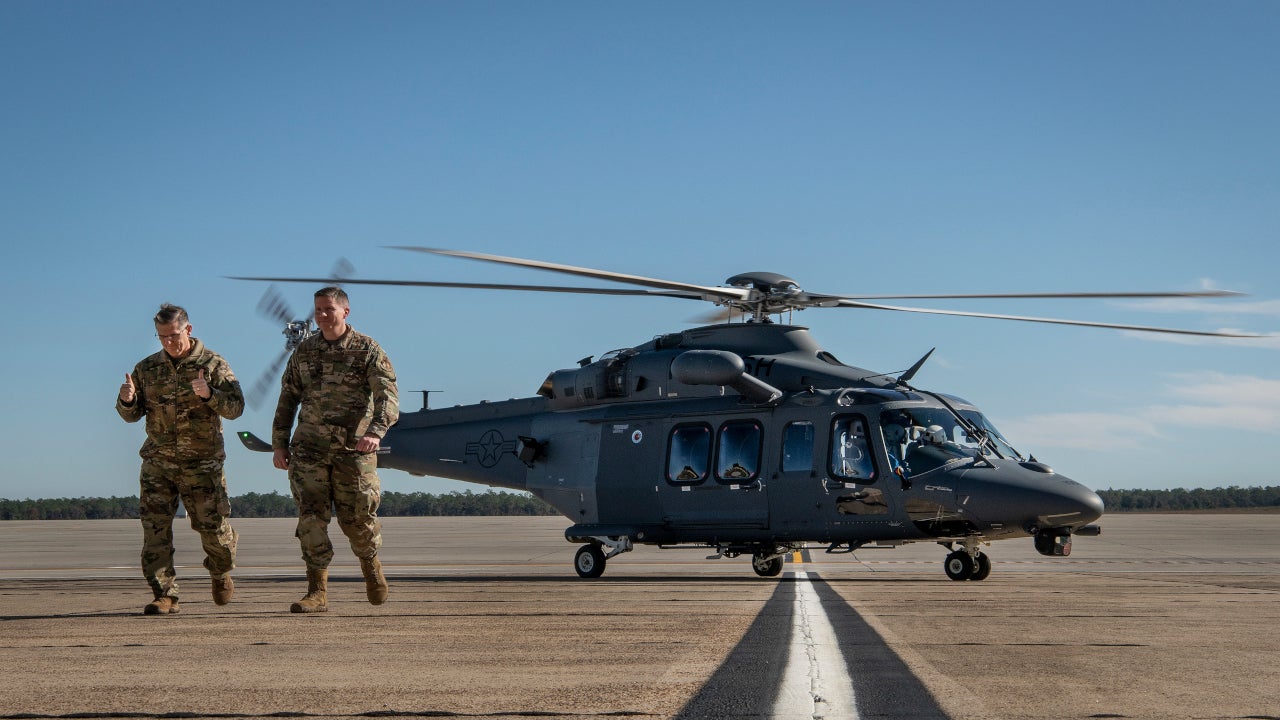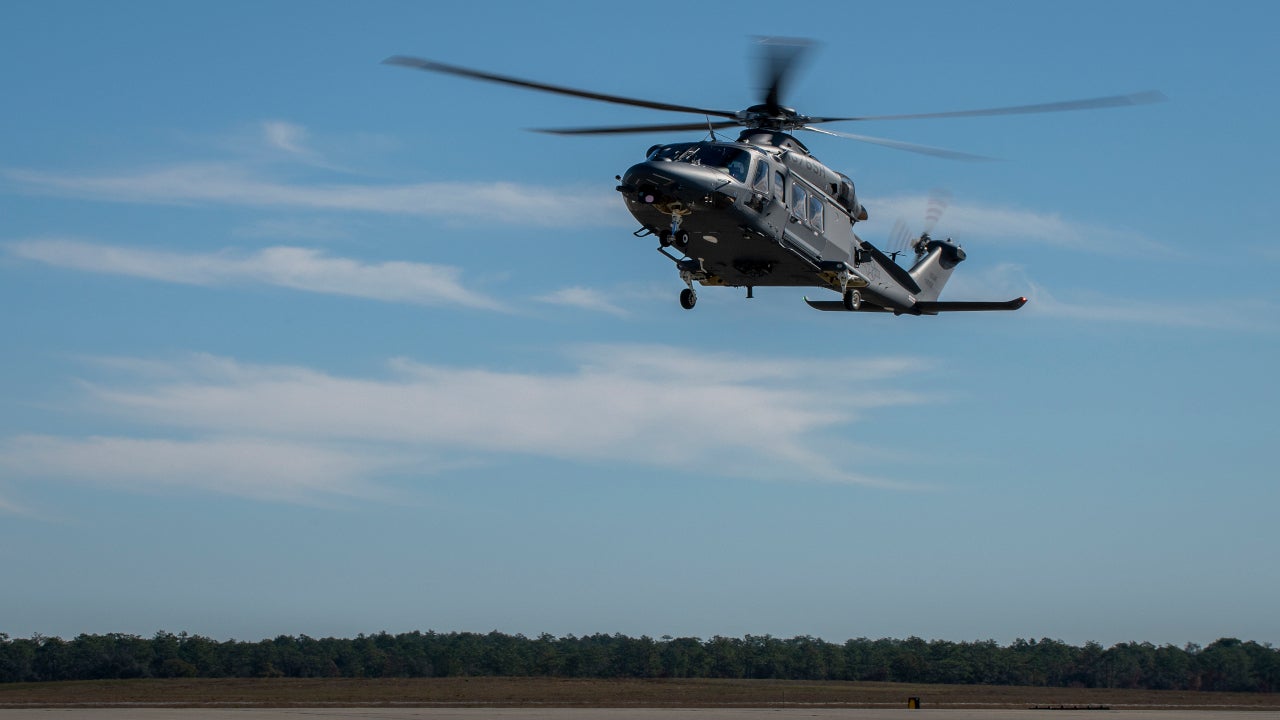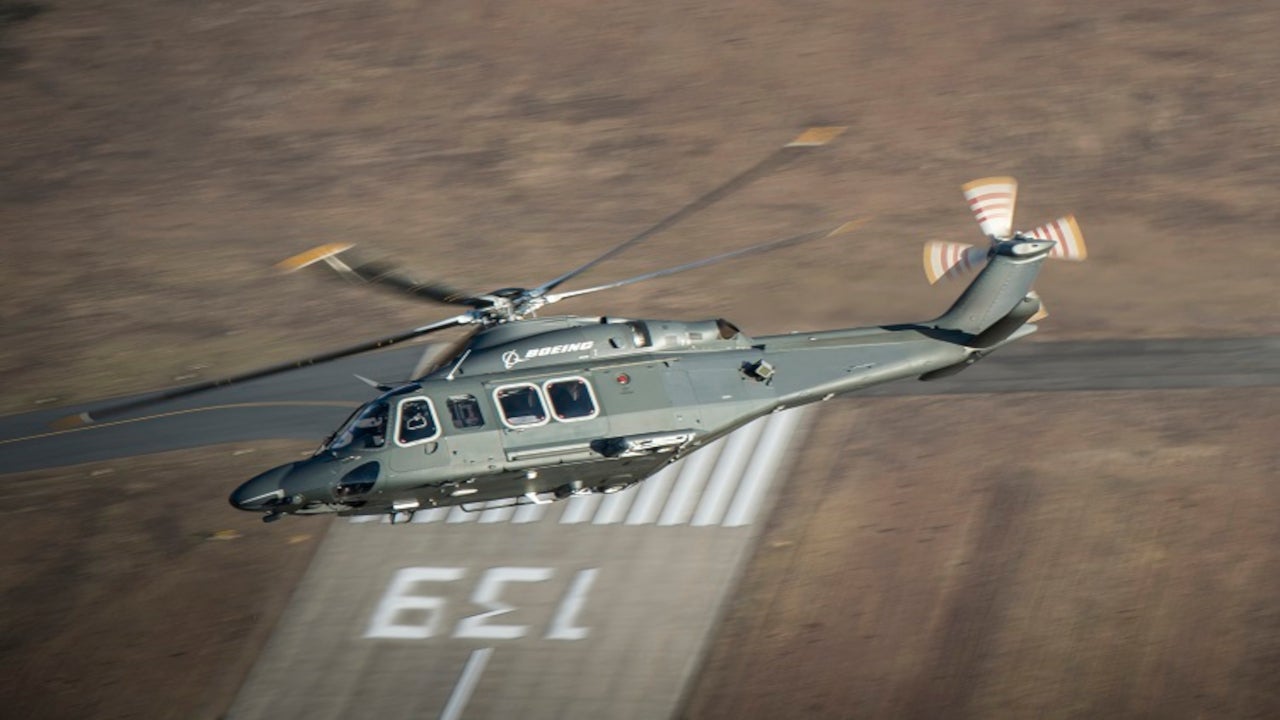The MH-139A Grey Wolf is a militarised version of the AW139 commercial helicopter developed by Boeing and Leonardo to replace the ageing UH-1N Huey fleet of the US Air Force.
The MH-139A Grey Wolf will support the intercontinental ballistic missile missions of the US covering Wyoming, Montana, North Dakota, Colorado, and Nebraska while complementing the country’s nuclear deterrence operations in line with the National Defence Strategy.
The multi-mission helicopter can also be utilised for transporting the US government officials and security forces, civil search and rescue missions, airlift support, National Capital Region missions, and survival school and test support.
Orders and deliveries of MH-139A
Boeing showcased its MH-139A Grey Wolf helicopter in the US Air Force Helicopter competition, which was a part of the US Air Force UH-1N Replacement Programme, in March 2017. The company won the $2.38bn UH-1N Huey replacement contract to provide up to 84 MH-139A Grey Wolf helicopters and associated support equipment in September 2018.
The US Air Force Global Strike Command (AFGSC) received the first MH-139A helicopter and named it “Grey Wolf” in December 2019. In addition to the AFGSC, which is the lead command and operational capability requirements sponsor, the MH-139A Grey Wolf will support the requirements of Air Force District in Washington, Air Education and Training Command, Air Force Material Command, and Pacific Air Forces.
A batch of eight MH-139A helicopters was procured by the US Air Force in fiscal year (FY) 2021. The US Air force has delayed further procurement of the helicopters until FY2023 due to an issue in the Federal Aviation Administration (FAA) airworthiness certification.
MH-139A Grey Wolf design and features
The MH-139A Grey Wolf is a dual-piloted, twin-engine helicopter integrated with survivability enhancement features as well as military communication and navigation systems.
The main rotor system is equipped with five blades and a completely articulated fail-safe system, resulting in high performance and low noise. The main and tail rotor has high ground clearance, ensuring safety for ground staff.
The survivability enhancement features include cockpit and cabin armour, self-sealing crashworthy fuel cells, AN/AAR-47 missile warning system and AN/ALE-47 countermeasures dispenser set, a forward-looking infrared camera system and two externally-mounted M240 crew-served weapons.
The 54.63ft-long MH-139A helicopter is designed to carry nine combat-equipped troops and security response equipment.
It has world-class military and commercial systems integration capabilities, an integrated training system based on the existing AW139 aircraft, a worldwide commercial, and Department of Defence (DoD) support system, and automated sustainment tools enabling seamless UniFi Secure Gateway (USG) interfaces.
Cockpit and avionics
The MH-139A helicopter features a state-of-the-art avionics system, advanced flight deck functionality, improved four-axis autopilot and automation, resulting in reduced workload for the crew members and enhanced flight ability in poor weather conditions.
The cockpit is designed to offer improved safety, situational awareness, and superior visibility. The open architecture of the avionics system allows for potential future advancements.
Cabin details of MH-139A Grey Wolf
The spacious cabin offers seating for up to 15 people. Both sides of the cabin can be accessed through large sliding cabin doors. The slide-down tactical windows facilitate the use of pintle-mounted machine guns without obstructing side cabin doors. The cabin also has high clearance from main and tail rotors.
Engine and performance
The helicopter is powered by two FADEC-controlled Pratt & Whitney Canada PT6 turboshaft engines that are housed in separate engine turbine burst containment compartments with independent inputs to the main gearbox. The engines have reduced infrared (IR) signature with lowered airflow and a directional exhaust, minimising plume impingement on the tail fuselage.
The helicopter has a cruising speed of 135kt and a maximum speed of 167kt. It can reach a minimum range of 225 nautical miles without the need for refuelling. The maximum endurance of the rotorcraft is three hours.
The helicopter provides improved operational flexibility and performance with 50% faster cruise speed, 50% better range and 30% larger cabin than the existing platform. It can lift a load of 5,000lb more than the standard platform and is incorporated with full autopilot capability to reduce the pilot’s workload.
The MH-139A features Boeing’s off-the-shelf, readily available solution for better performance, flexibility and safety. Its unique design allows the performance of all the helicopter maintenance activities at the operation level. The lower operating costs, enhanced reliability and maintainability of the helicopter will save more than $1bn for the US Air Force over its 30-year service life.











